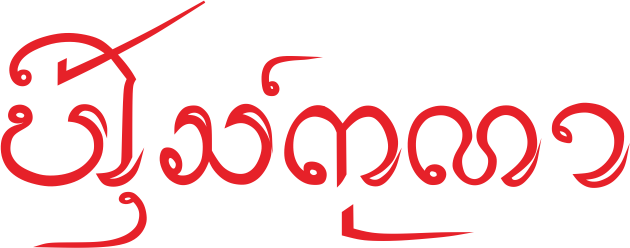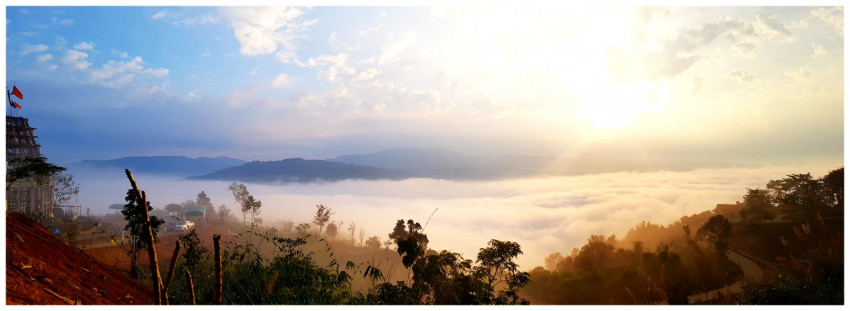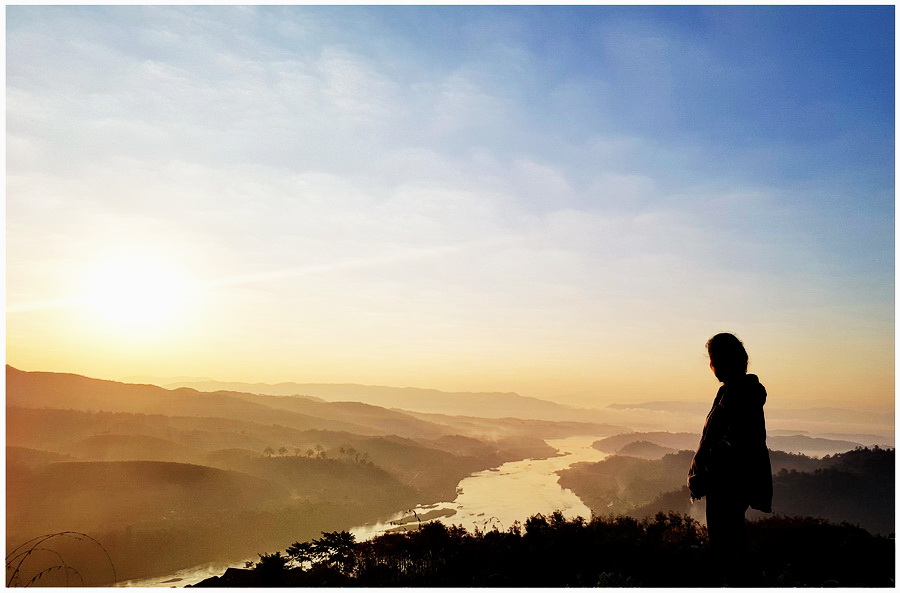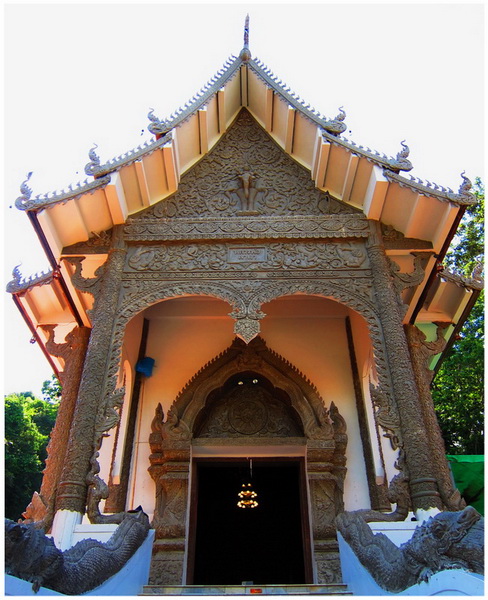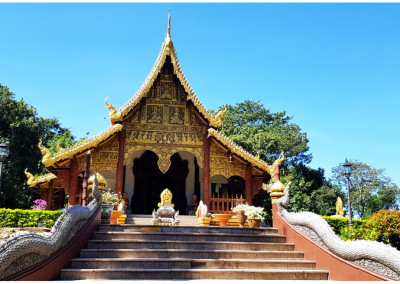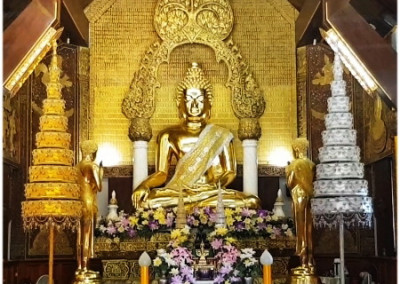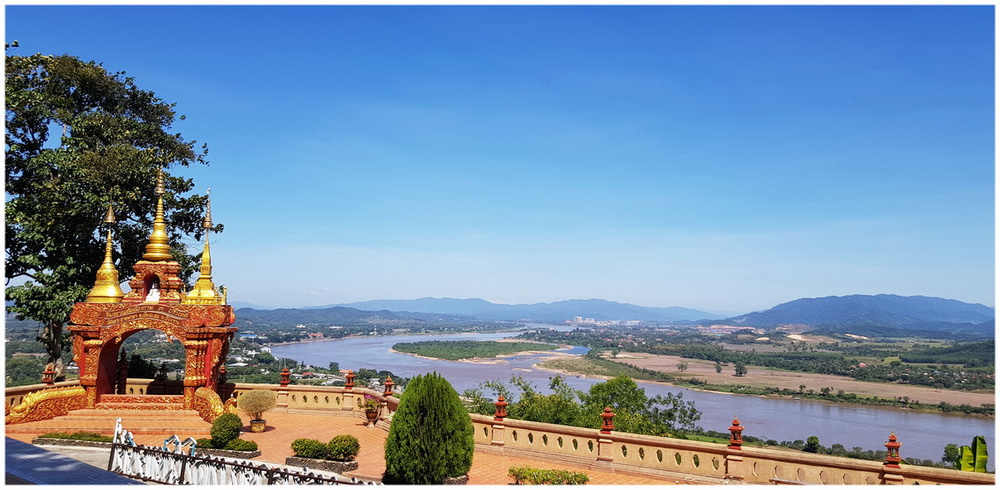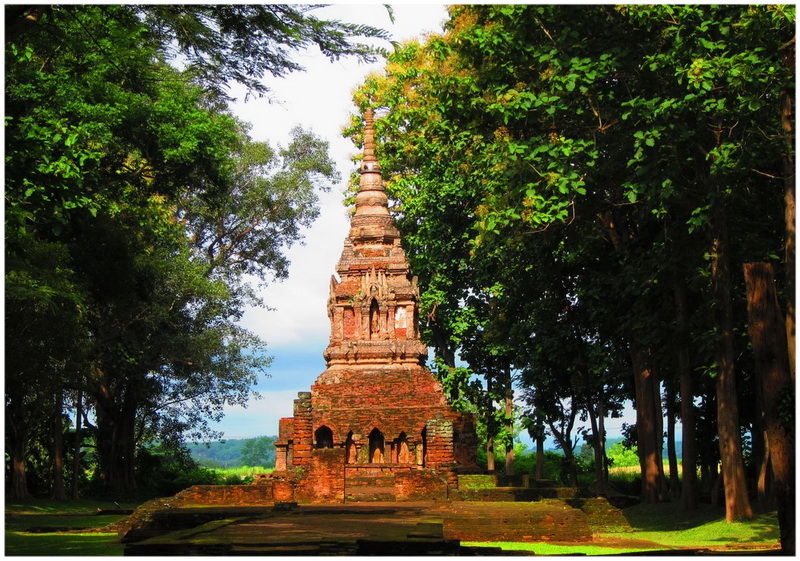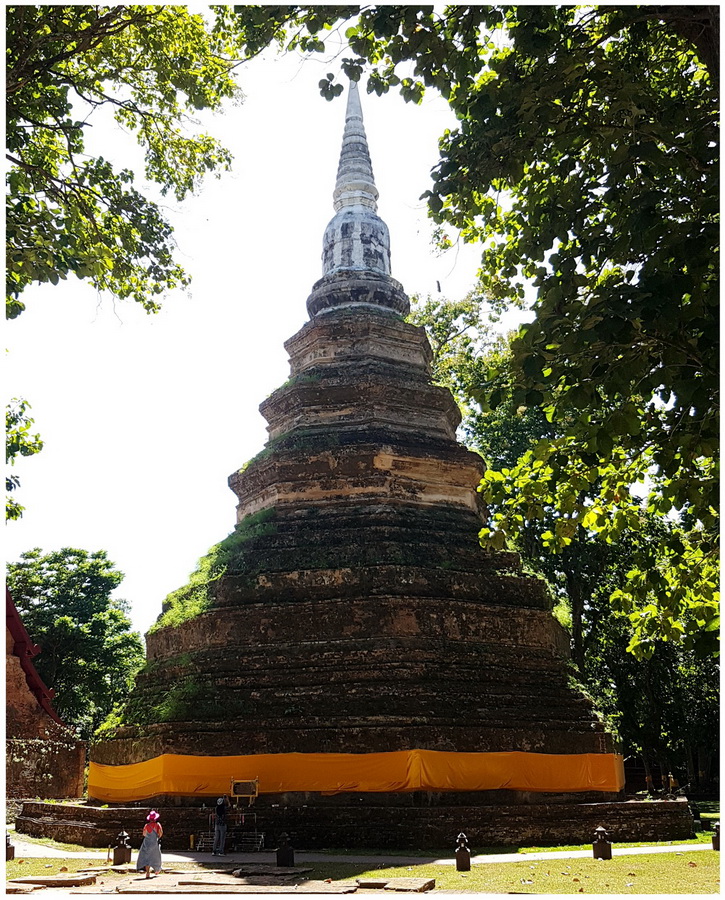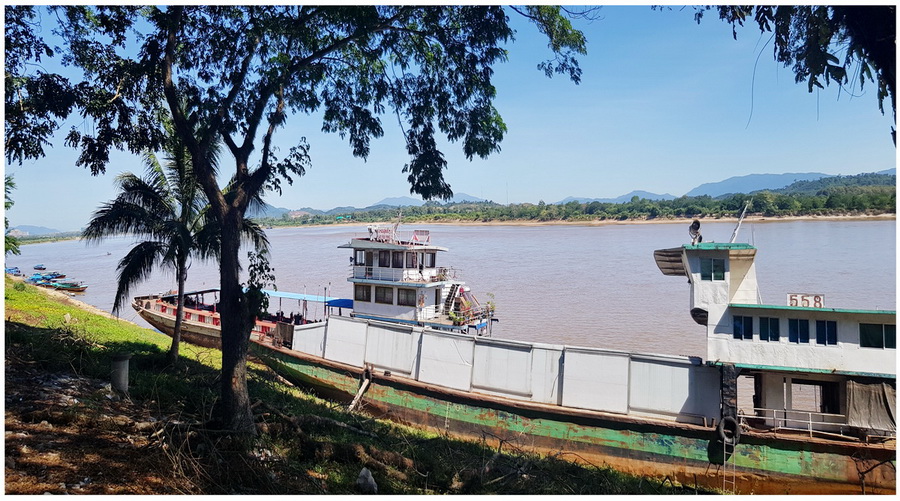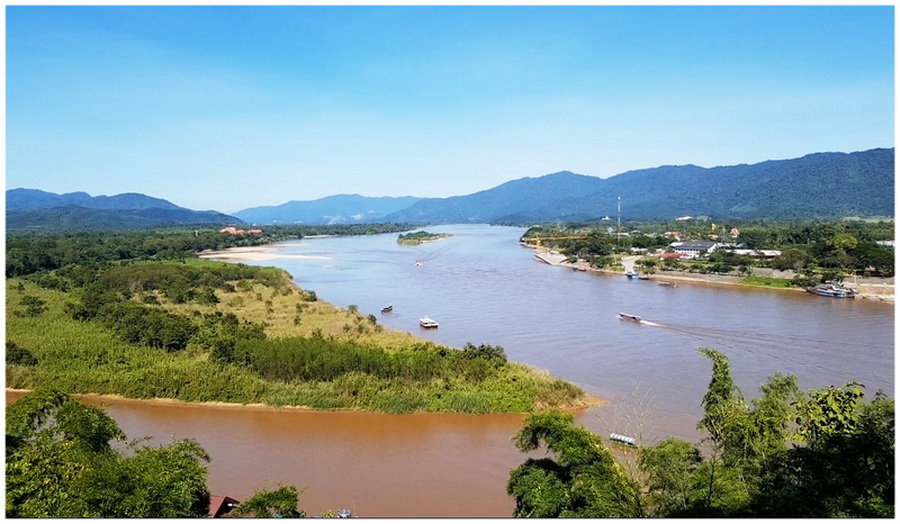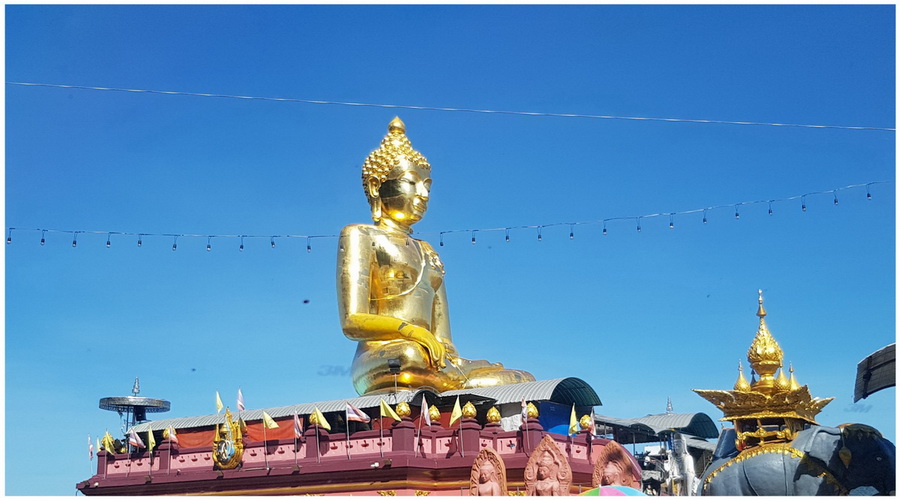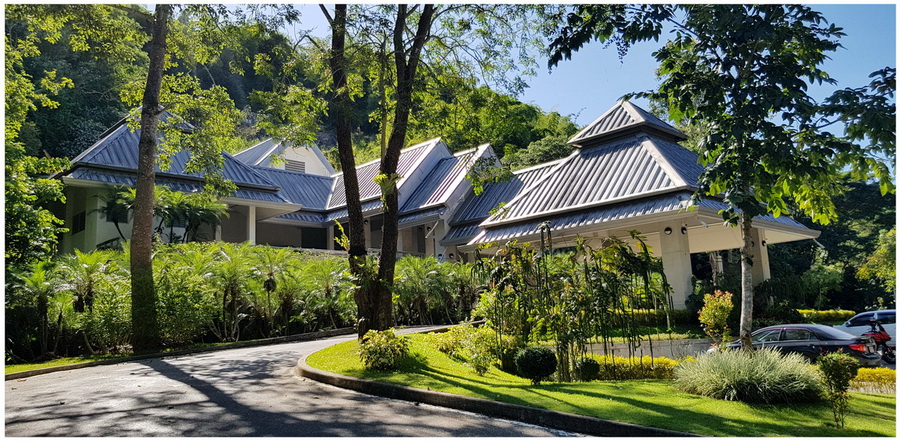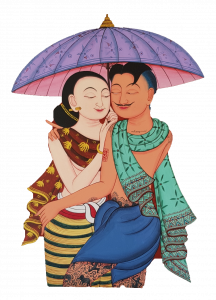
![]()
Things to Do Chiang Khong – Chiang Saen
One Day trip
Watch the sun rise
at Wat Thep Nimit over looking Chiang Khong, the Mekong and Laos.
Legend of Phra That Pha Ngao:
Khun Pha Phing or Khun Phing (Phra Phing), the ruler of the Yonok city, 23rd year of the year 494 – 512, built the pagoda on a large rock at Doi Chan Mountain. The builders of Phra That Chom Chan and Phra That Chet Yot on “Doi Kham” and “Doi Chan” respectively when Khun Lang ruled the town.
“Wiang Peik Sa” (Chiang Saen now) during the year 996-1007, he persuaded the people of the city to help build a pagoda on the top of Doi Kham. Today it’s called
“Tad Chan”. This stupa refers to Phra That Chom Chan and Phra That Chet Yot. The base is about 5 meters.
Chiang Saen is a district in Chiang Rai Province, northern Thailand.
Chiang Saen is an important entrepôt for Thailand’s trade with other countries on the upper part of the Mekong River.
History
According to an ancient chronicle,[ the original city of Chiang Saen was built in 545 CE in an area called Yonok by Tai migrants from the Chinese province of Yunnan, and was an important city (Southeast Asia Mandala-model mueang) of the Lanna Kingdom. No reliable written history of the city exists until the arrival of King Mengrai in the 13th century. His grandson, Saen Phu, ruler of the Lanna Kingdom, founded Chiang Saen in 1325 or 1328.
The city was sacked by Chao Kawila of Chiangmai during the reign of Rama I, because it had been the Burmese base of operations in the preceding years. The city was deserted, while its inhabitants resettled in other Bangkok-allied Lanna cities such as Lampang and Chiang Mai. Several ancient ruins are found in the old cities. For example, Wat Pa Sak hosts a well-preserved Lanna-style phrathat.
